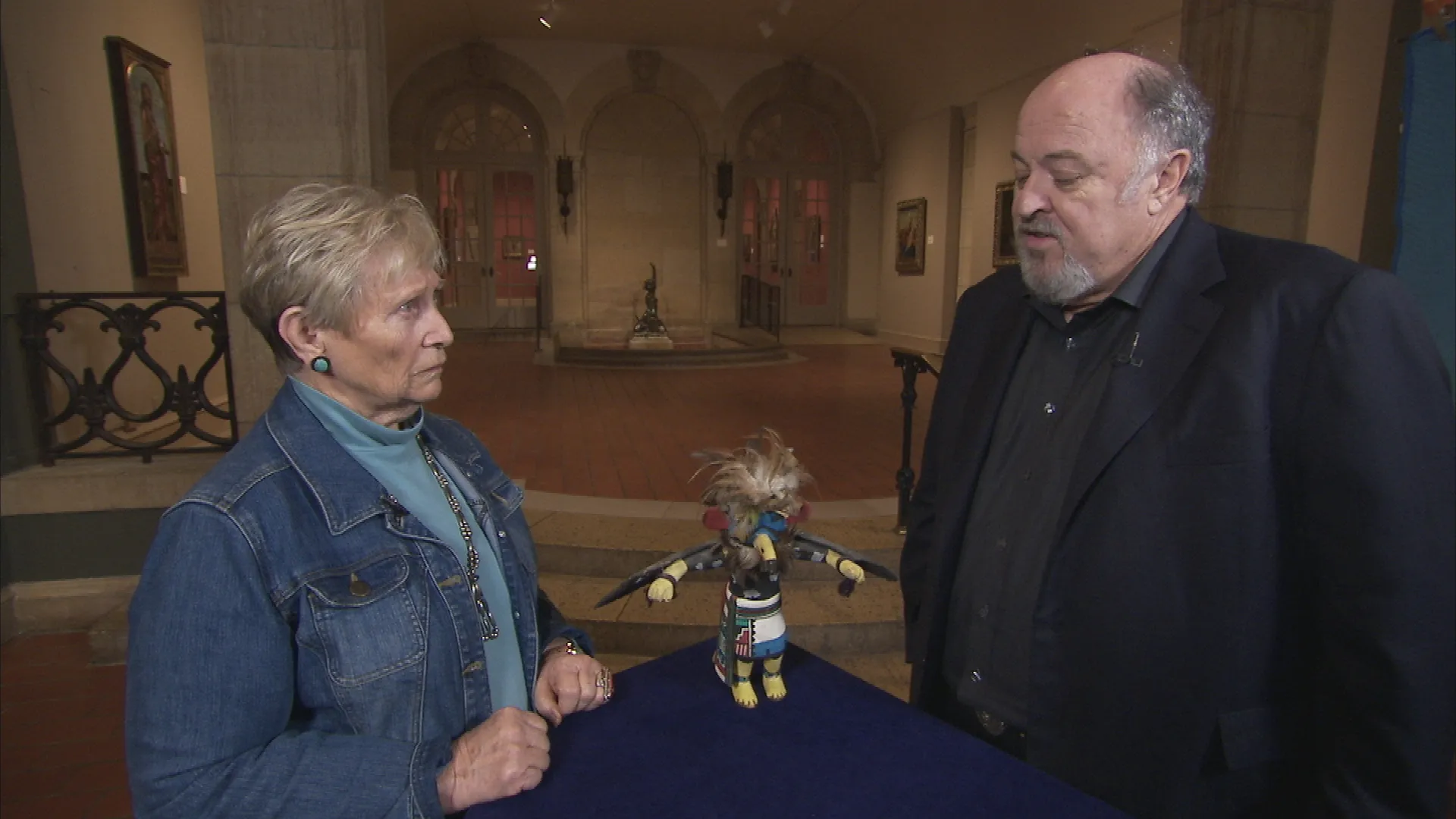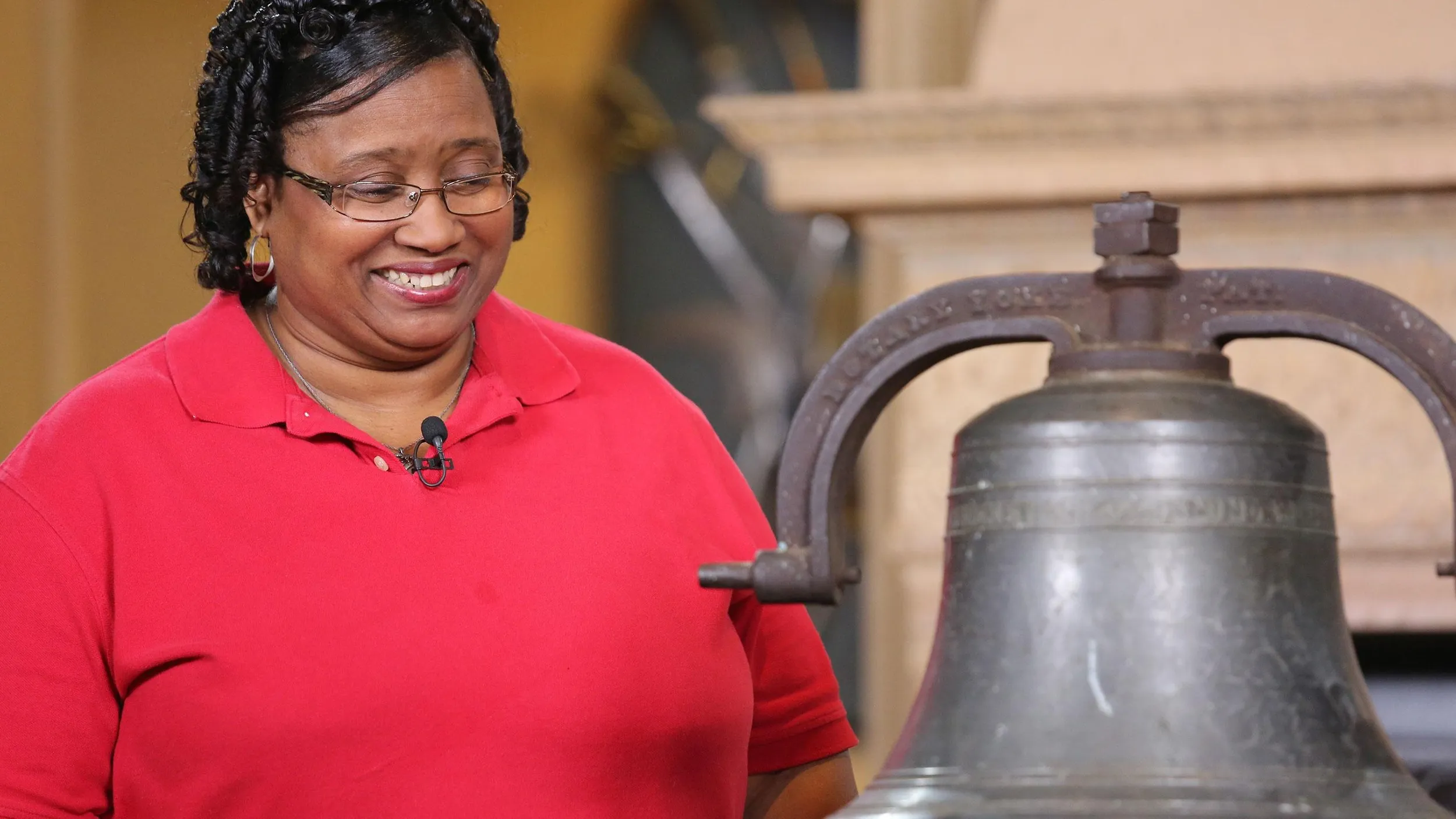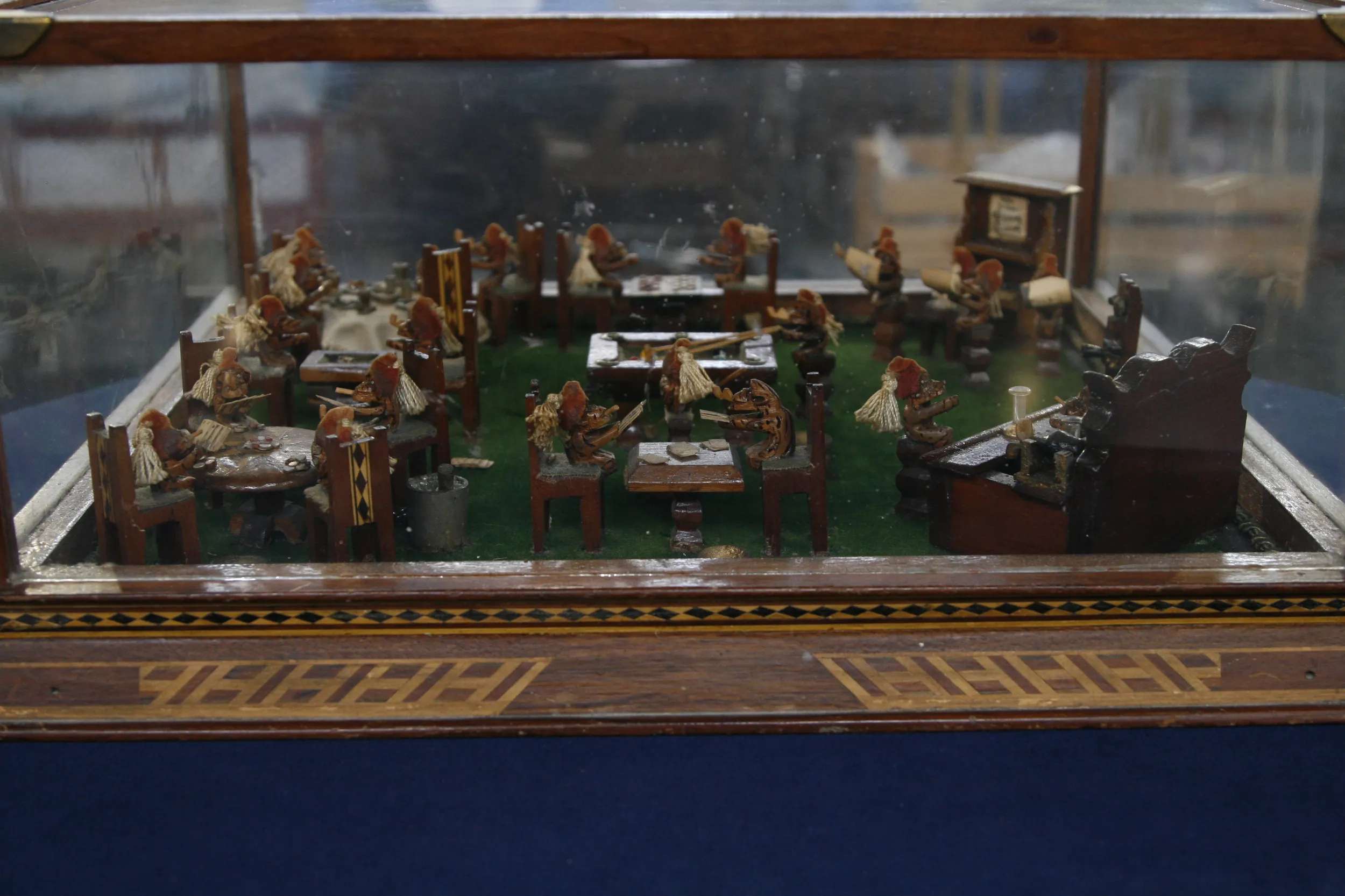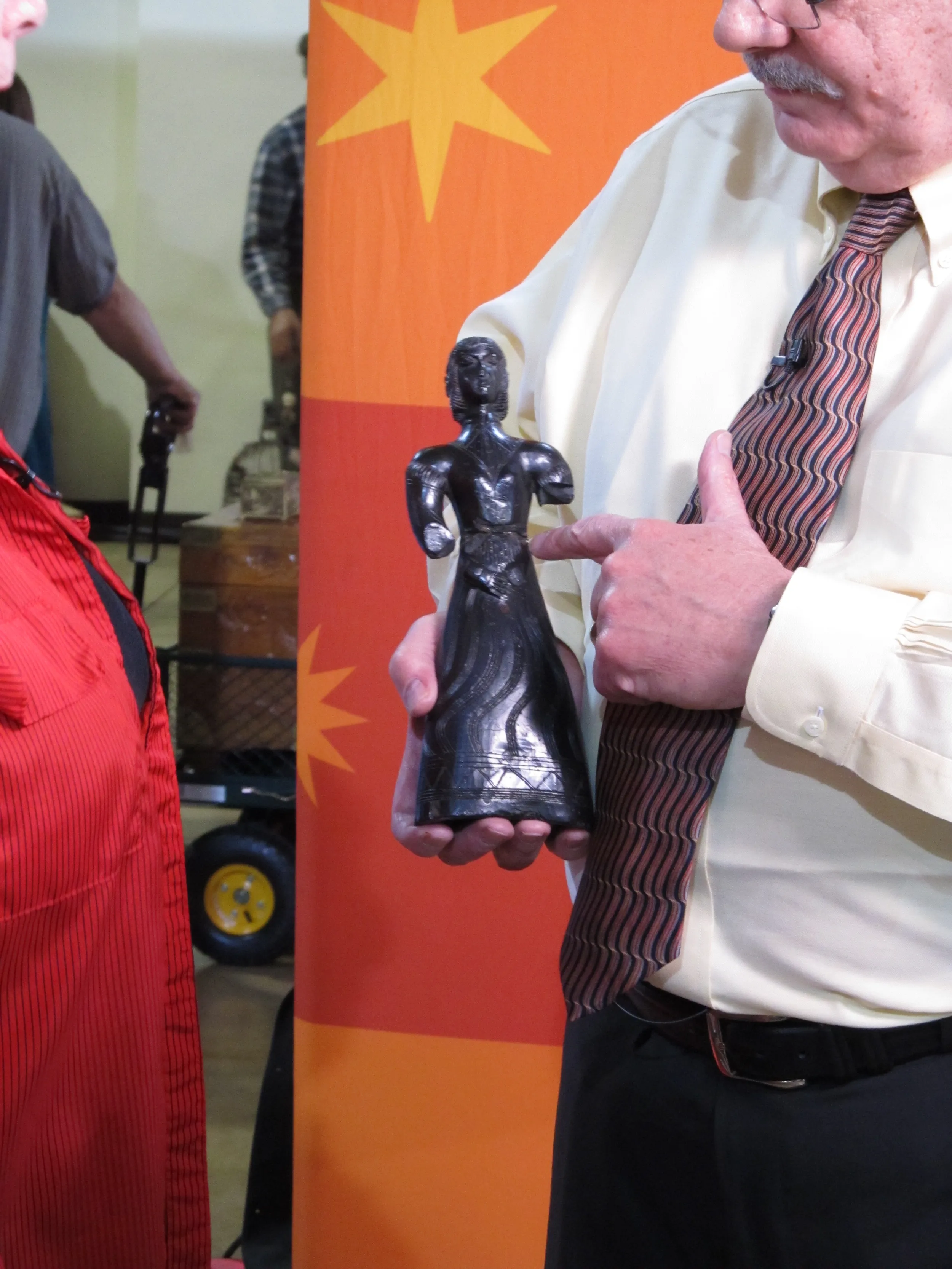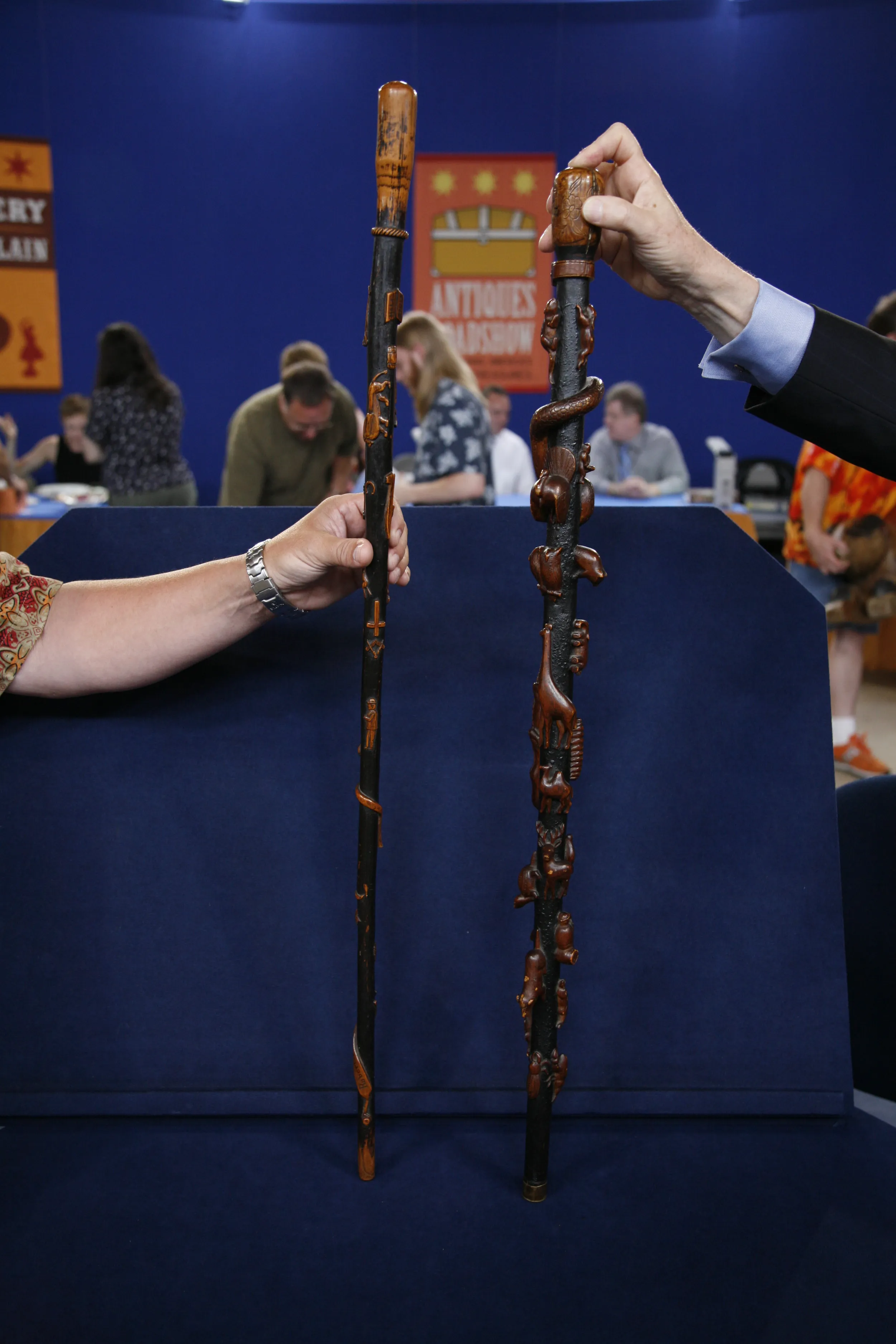GUEST: This piece belonged to my mother-in-law. She's from Flagstaff, Arizona, and she's a, was a docent at the museum there. And the carver of this kachina did some work there, and she got to be friends with him, and he carved this one for her. This is what I have been told.
APPRAISER: And do you know who the carver was?
GUEST: Well, I know he's Hopi, and his first name was... he went by Jimmy. And they called him Jimmy K., because it's rather difficult to pronounce his last name.
APPRAISER: It is. (laughing) It's very difficult. It's Jimmy Kewanwytewa. This is a Hopi kachina, and it's carved in a very traditional way in that it's all cottonwood. This guy was born in the late 1800s, and, at that time, kachinas were very straight-up, stiff figures. They, they had their arms down at their side, or they had them like this, and they had a tableta on, you know, the headdress, and they were... They weren't these action figures. And Jimmy K. broke that tradition, and, all of a sudden, you've got these action figures. They're obviously dancing, arms out. And he kind of did his own thing, but he was still a traditional Hopi craftsman. And because of that, they've become highly collectible. I'm not quite sure who this is. It may be an eagle kachina, it may be a hawk kachina, or it may be a crow kachina. I think it's a hawk kachina and was probably done in the late '30s, early 1940s. And it's neat that all the feathers are on it, because a lot of them you see, all the feathers are gone. They look like they're all chicken feathers and different kinds of domestic birds. So, I don't think there's any legal problems with migratory birds or protected species. And he was trying to make something to sell that was artistic. He wasn't doing ceremonial things. But I think, overall, it's just a nice piece. If you saw this in a gallery today, it would be $1,500 to $2,000.
GUEST: Oh.
APPRAISER: It's neat to see it come in. I don't think we've had one come in the door, ever.
GUEST: Oh, well, good. (laughs)

